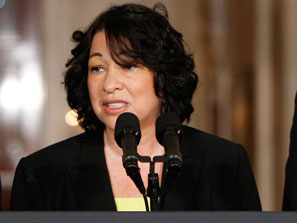Law School Announces Milwaukee Foreclosure Mediation Program
At a press conference today in Eisenberg Hall, featuring Attorney General J.B. Van Hollen and Milwaukee Mayor Tom Barrett, the Law School announced today the creation of a program that will provide mediation between lenders and residential borrowers facing foreclosure. This program responds to the final report and recommendations of the Milwaukee Foreclosure Partnership Initiative issued in February 2009. It is underwritten by $100,000 in grant funding allocated by the City of Milwaukee and $310,000 in grant funding from the Attorney General made possible by the recent settlement of the state’s lawsuit against Countrywide Financial Corporation. The mediation program is described in this press release and represents an instance of the Law School’s seeking to use its particular expertise (in this case, with respect to dispute resolution) to address a pressing problem facing this region. Particular kudos to Dan Idzikowski, Assistant Dean for Public Service, for his work in leading the Law School to this moment.

